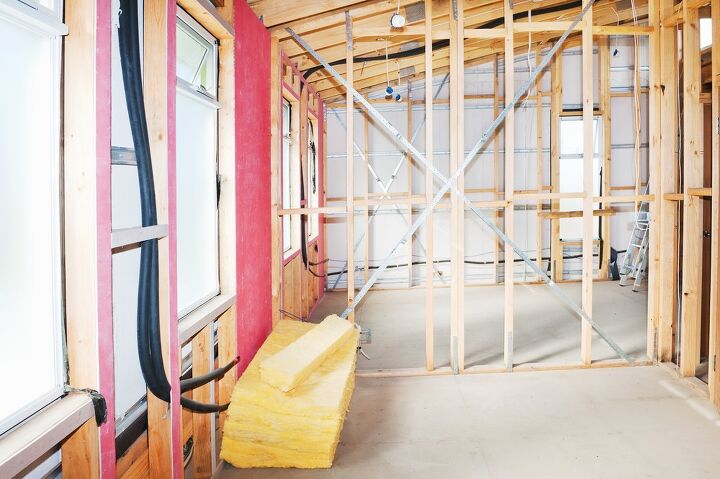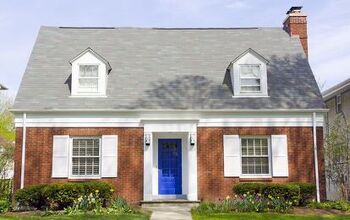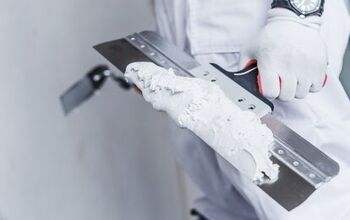Can You Put Insulation Over Electrical Wires? (Find Out Now!)

You may be building your new dream home, remodeling your present home, or simply upgrading the insulation on your attic. Batt or loose insulation is often the easiest for the do-it-yourselfer to install insulation. Many homeowners wonder if you can put insulation over the electrical wires in your home.
In the US, most building codes allow insulation to contact the electrical wiring in your home. Most building codes require Romex wire in residential construction, which is shielded in an insulating jacket. Under no circumstances should insulation be installed where it can contact bare live wiring. If you have any questions, contact your local building inspection department for advice.
Adding insulation to your home, especially in the attic, can mean a cozier and more energy-efficient home. You can reduce heating and cooling bills by adding additional insulation over any existing insulation in your attic. Older homes can benefit from having insulation blown into the exterior wall spaces. Understanding how insulation and electrical wiring co-exist is important for this process.
Do You Need Insulation Installers?
Get free, zero-commitment quotes from pro contractors near you.

The Built-In Safety Factors
The chief means of ensuring that insulation can be laid over electrical wiring is in the building codes and material requirements used in the United States. In the US, every building code requires that the electrical wiring in a residential construction be insulated. Most of the wiring used in the US is Romex, a brand and style of electrical wiring that meets all the building code requirements.
Most of the Romex used in the US construction trades has three or four wires inside a polyvinyl outer jacket. Each of the wires inside the insulating jacket is also covered in a polyvinyl insulator. These insulating jackets protect against short circuits, moisture, and damage to the wiring.
The insulating properties of the polyvinyl jacket materials ensure that it is safe for your insulation to lay over the wiring.
Can I Use Loose Fill Insulation Where Electrical Wires Run?
Yes. The protections afforded by the Romex electrical wiring insulation protect loose fill as well as batt style insulation. It is safe to blow in loose-fill insulation in your attic over existing insulation and any wiring that runs through the attic.
Remember to take care not to damage the wire insulation as your work by stepping on it or dropping tools. In addition, be sure that the vent pipes attached to your furnace and water heater don’t contact the loose-fill insulation and remain properly attached.
My Contractor Wants to Use Foam Panels. Is This Safe Over Electrical Wiring?
It is safe to install rigid foam panels over electrical wiring. This is a bit more costly and time-intensive than installing batt insulation. The time spent to cut pathways in the rigid foam panels for the electrical wiring can be intensive. However, there are situations where rigid foam panels are a good option.
If you are insulating a basement with bare concrete wall and electrical circuits on the surface of the walls, rigid foam panels are a good choice. The panels can be but to cover and conceal the electrical wiring and glued to the concrete walls. A lathe can be installed over the rigid foam panels, and your final wall finish is attached to this lathe.
Can you Spray Foam Insulation Over Electrical Wires?
Spray foam insulation is becoming more and more popular with home and commercial builders. The spray foam insulation products can be used on existing homes as well. The application methods vary depending on the situation, but the foam is usually sprayed onto the surface. It is safe to apply spray foam over existing electrical wiring.
What is Spray Foam Insulation?
Spray foam is a two-part system. Two chemicals are mixed just before they are sprayed or injected onto the surface that is being insulated. As the two chemicals react, they create gas bubbles that expand the foam. The expanding foam fills cracks and voids as it grows. When properly applied, a spray foam insulation job is virtually one piece without joints or cracks.
Can Foam Insulation Be Installed in Existing Walls?
Certain types of foam insulation can be injected into existing wall spaces. The injection process requires special equipment and training. To inject foam insulation into an existing exterior wall requires drilling holes in the exterior wall between the stud spaces. This can lead to some unsightly patch jobs that may detract from your home curb appeal.
The spray foam installer who injects foam insulation must be well trained. There is always the chance of putting too much foam in a given space. As the foam expands, it can creep through any interior or exterior opening. If too much foam is injected and has no room to expand, the foam can cause structural damage to your home.
Is Insulation Flammable?
The flammability of insulation is largely dictated by the material used and how it is treated. The most common types of insulation installed in residential structures are listed below.
- Fiberglass insulation is usually considered non-flammable. The glass fibers used in the insulation won’t burn. However, the paper backing used to hold the glass fibers in place will burn.
- Cellulose, which is basically ground-up paper, is combustible in its raw state. Even when the cellulose is treated with fire-retardant chemicals, it remains a fire hazard to some degree. Many building codes now prohibit the use of cellulose loose-fill insulation.
- Spray Foam is becoming more and more popular in residential construction. However, the foam when it is fully cured, is flammable
- Rigid foam panels, like spray foam, are a type of plastic when they are cured. The foam panels are flammable. This includes the foam panels covered with radiant barrier material used on outside walls and roofs.
Fortunately, when properly installed, home insulation is a safe bet. You can safely install the materials over and around electrical wiring if the wiring is intact and undamaged.
Do You Need Insulation Installers?
Get free, zero-commitment quotes from pro contractors near you.

Insulation and Electrical Wiring
If your electrical wiring meets building codes, there should be no problem installing insulation over the wiring. Foam, blankets, and blown-in insulation can all be safely used where electrical wiring is present. A good insulation contractor understands the requirements and how to install your new insulation properly for best results. Good luck with your insulation project.
Related Guide

Dennis is a retired firefighter with an extensive background in construction, home improvement, and remodeling. He worked in the trades part-time while serving as an active firefighter. On his retirement, he started a remodeling and home repair business, which he ran for several years.
More by Dennis Howard



























![10 Most Dangerous Neighborhoods in Baltimore [Updated]](https://cdn-fastly.upgradedhome.com/media/2023/07/31/9075655/10-most-dangerous-neighborhoods-in-baltimore-updated.jpg?size=350x220)